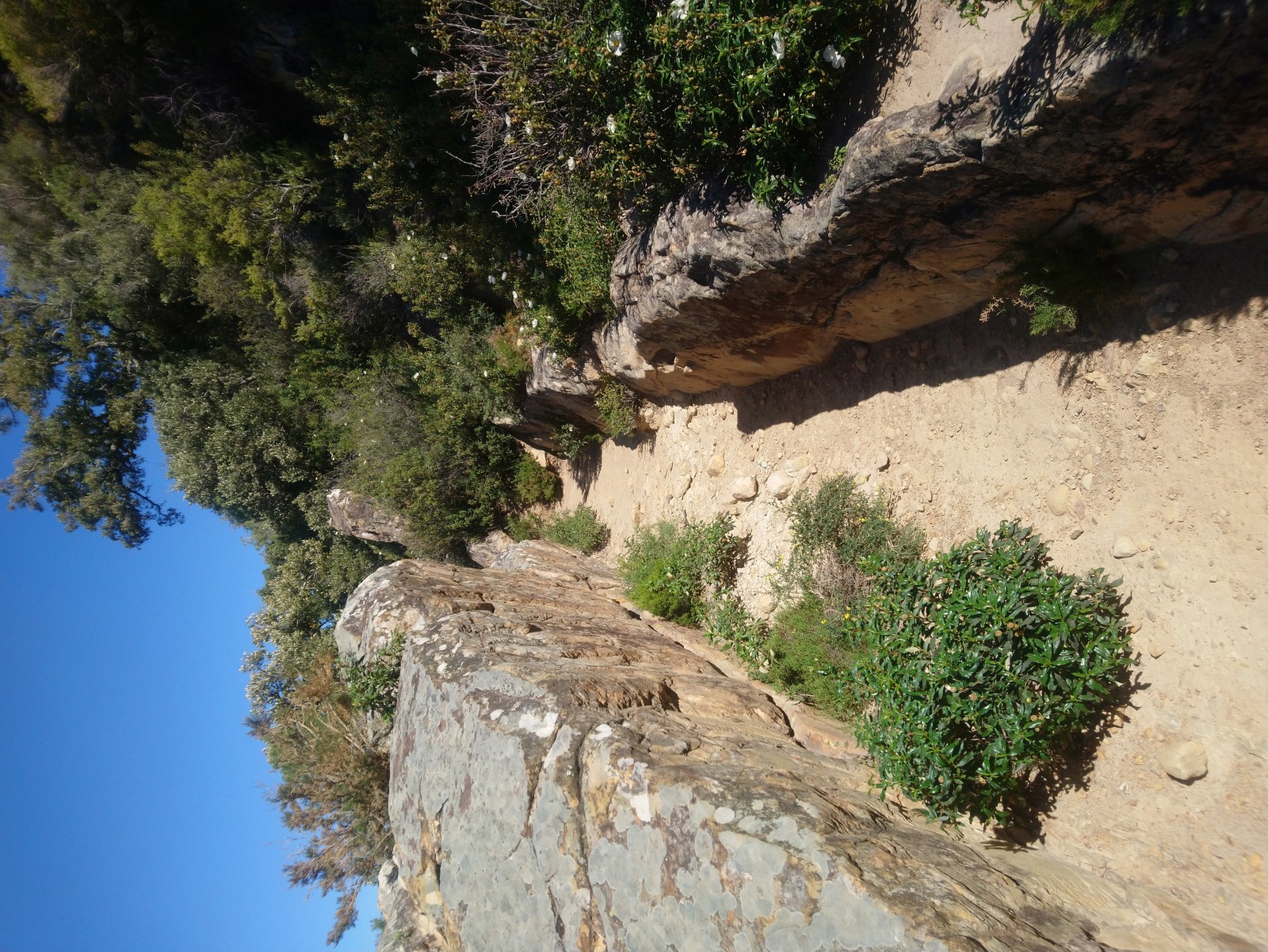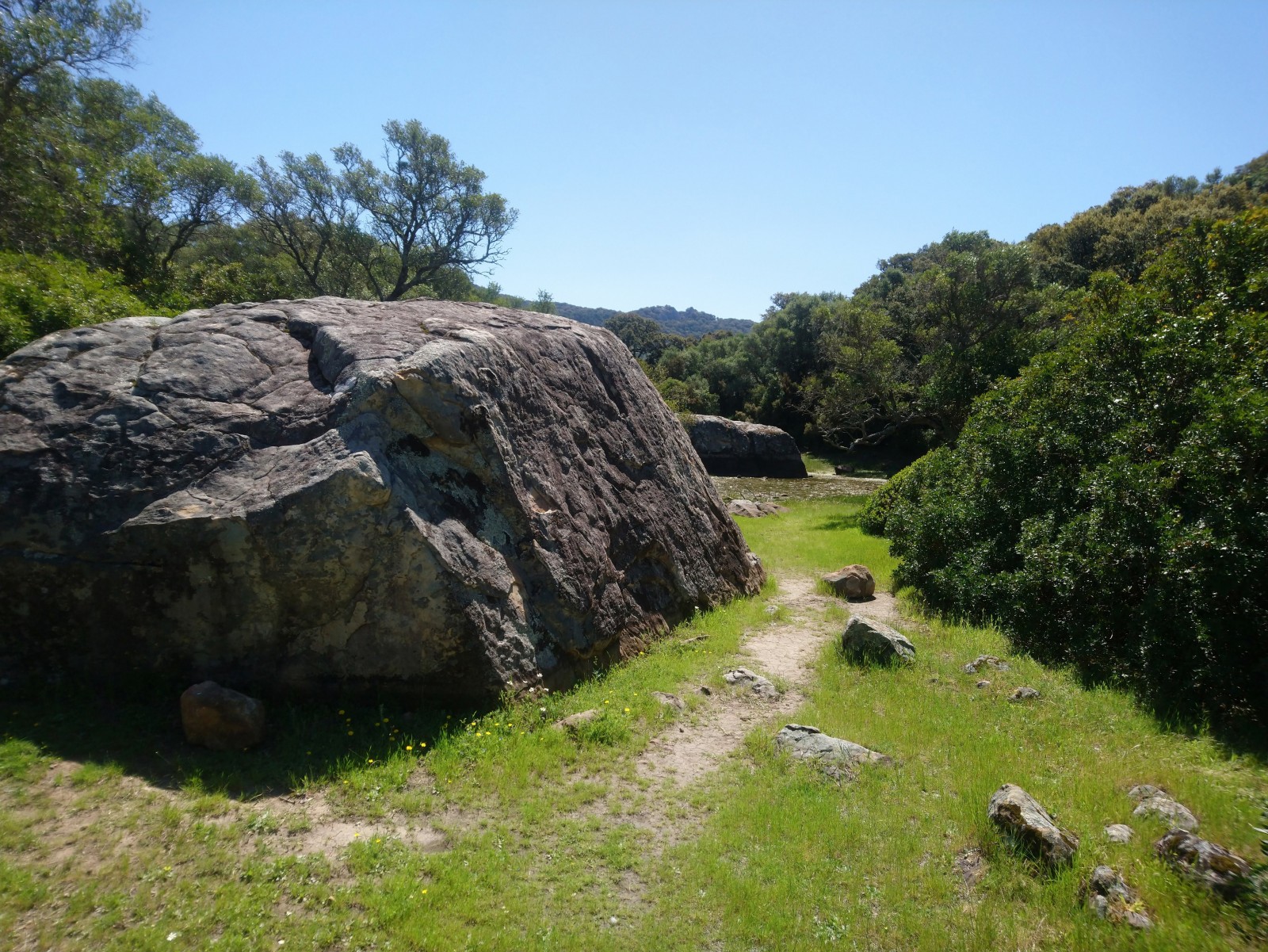Beschreibung
This route, near Alcala de los Gazules, offers convenient access off the main A 381 road into the woodlands and hills of the Alcornocales Natural park. The town itself has a large colony of Rötelfalke in good numbers of which can be seen hawking over the town, particularly in the morning and evening, from February onwards. Despite what some guides tell you small numbers of this charsimatic falcon remain through the winter. Those hoping to photograph or just get better views of this iconic species are advised to head up towards the church and ruined casle at the top of the hill (best on foot as the route by car is narrow and tortuous). The valley itself is an excellent place to look for raptors and woodland birds but also attracts passing migrants which funnel through the area in spring and autumn.
Leave the road around the village at a sharp bend to head down the valley (signposted 'Camping Gazules'). As you do so keep a sharp look out in Spring and summer for Maurensteinschmätzer, a declining species that is often found perching on the fences here. As you continue the Molinos valley opens out before you giving good views of fields and the low wooded mountains beyond. The latter have large breeding colonies and roosting sites for Gänsegeier so it's not unusual to see dozens of these birds lazily soaring on thermals along the valley. It always pays to stop and check any thermalling vultures for other raptors. After almost 3 km a track on your right provides and excellent place to pull off the road to do so. Bordered by fences, telegraph wires and a scrubby hedge this track is also a good place to scan for smaller birds particularly in spring and autumn. Look here for residents like Samtkopf-Grasmücke, Schwarzkehlchen, Haubenlerche, Grauammer and Steinkauz, summer visitors such as Orpheusspötter, Rotkopfwürger and occasionally Maurensteinschmätzer plus hirundines (including the odd Rötelschwalbe) and during migration Bienenfresser (often in large groups hawking from the wires) and scarcities such as Brachpieper or Häherkuckuck. Check all smaller falcons as both Turmfalke and Rötelfalke hunt in the valley (and Baumfalke pass through on migration).
Return to the road to continue towards the head of the valley passing a campsite and then a small venta as you do do. The last 200m of the road is rough and potholed so take care. Park near a small metal gate that marks the start of the linear 2km 'Ruta de los Molinos' (Route of the Mills) footpath. It's often worth pausing here as the thistly fields are good for Stieglitz and Girlitz whilst in autumn and spring the bushes often hold birds like Trauerschnäpper and Gartenrotschwanz (with Hausrotschwanz replacing the latter in winter months). As always keep checking the skies for raptors!
Passing through the gate the first 50m of the route can be very muddy and the narrow path is uneven and rocky in places although most of the track is negotiable with due care and attention. The exception is a steep rocky section c1km from the start that you have to scramble up. As you pass between patches of dense scrub listen out for Mönchsgrasmücke and Nachtigall but don't ignore the rocky outcrops as they hold Blaumerle. As you continue the scrub gives way to more open areas where you can find Zaunammer. Re-entering a scrubby area look for the usual small passerines as you carefully negotiate the rocky path. A good viewpoint here gives you a view back along the valley and down towards a ruined mill - scan for Pirol in the taller trees. The rocky outcrops here invariably hold resting Gänsegeier. All along this route you should be scanning for raptors - Zwergadler, Schlangenadler , Mäusebussard and Sperber are all frequent but finding Habichtsadler and Habicht requires some luck. Following a spiral of Gänsegeier can be a good way to locate the scarce Schmutzgeier. These raptors are augmented during passage by Schwarzmilan, Wespenbussard and even the occasional Fischadler (which breed on the nearby reservoir). Also look for Schwarzstorch passing overhead during migration.
From the viewpoint the path then seems to run into a blank cliff face (check again for Blaumerle and now also Felsenschwalbe) but at the last moment veers to oneside up a steep rocky incline. The wild olive trees here shelter various species including the Spanish race ofSchwanzmeise, Sommergoldhähnchen and variable numbers of Iberienzilpzalp. Continue along the path through maquis scrub until you reach the ruins of an old mill which marks the end of the footpath. This is a good place for a picnic during which renewed scanning should produce still more raptors (there's even a slim chance of Spanischer Kaiseradler in this area).
However, the route can be extended by following the Verada de Patrite Y Jimena (signposted on your left as you reach the ruins). It's a steep climb through low scrub but after several hundred metres you reach more mature cork oak woodland and a delighful small pool (dry in summer) that can attract small birds. Although you should have heard them earlier this is a prime spot for Berglaubsängerand woodland here also holds Eichelhäher, Misteldrossel and other 'northern' passerines. In theory it's possible to walk through to Jimena on the far side of the Alcornocales from here but unless you're prepared for a long fairly arduous hike and an overnight stay return by the way you came.
Details
Zugang
Access by car from Alcala de los Gazules. A good metalled road (rough for the last 200m) runs the length of the valley after which a steep and rocky footpath runs for 2-+ km into the hills.
Terrain und Habitat
Berg , Wald , Vereinzelte Bäume und BüscheBedingungen
Gebirgig , Hügelig , Felsig , Offene LandschaftRundweg
NeinIst ein Spektiv nützlich?
NeinGute Beobachtungszeit
Frühjahr , Sommer , HerbstBeste Beobachtungszeit
Frühjahr , Herbst , SommerRoute
Schmaler Pfad , asphaltierte StraßeSchwierigkeitsgrad der Tour
DurchschnittlichErreichbarkeit
zu Fuß , FahrradBeobachtungshütten oder -türme
NeinZusätzliche Informationen
After heavy rain the thick clay at the start can make the first 50m of the footpath virtually impassable. The campsite here has pleasant (and relatively cheap) chalets for rent which can be a good base for exploring the area.




